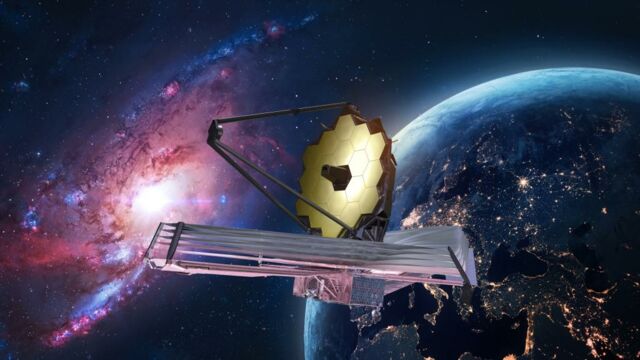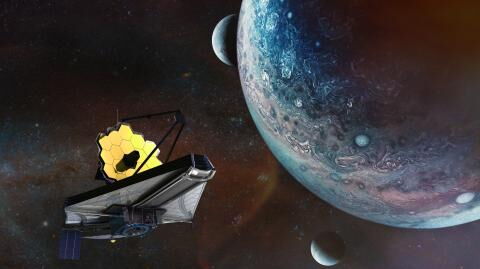Since being launched on December 25, 2021 the James Webb Space Telescope (sometimes called JWST or Webb) has stunned us on Earth with the most unbelievably detailed images from the outer space.
Discover our latest podcast
Before the launch, NASA had announced that Webb could actually provide images of phenomenon hitherto unobserved by mankind, like the formation of galaxies. As NASA puts it,
The James Webb Space Telescope (sometimes called JWST or Webb) is an orbiting infrared observatory that will complement and extend the discoveries of the Hubble Space Telescope, with longer wavelength coverage and greatly improved sensitivity.
And since it has been set up, Webb has in fact surpassed all expectations and already spell-bounded us with the images it has sent back.
Here are some of the most amazing photos from Webb released by NASA:
Deep Field: SMACS 0723: The first images by Webb
The first images ever captured by Webb were unveiled by US President Joe Biden on July 11, 2022. This was the deepest infrared photo of the universe ever captured. The image shows the galaxy cluster SMACS 0723 as it appeared 4.6 billion years ago. Webb aims to seek images of the earliest galaxies of the universe which will aid researchers in studying masses, ages, histories, and compositions.
👀 Sneak a peek at the deepest & sharpest infrared image of the early universe ever taken — all in a day’s work for the Webb telescope. (Literally, capturing it took less than a day!) This is Webb’s first image released as we begin to #UnfoldTheUniverse: https://t.co/tlougFWg8Bpic.twitter.com/Y7ebmQwT7j
— NASA Webb Telescope (@NASAWebb) July 11, 2022
Interacting Galaxies: Stephan’s Quintet
Webb Telescope has also been successful in capturing images of Stephan’s Quintet, a visual grouping of five galaxies. This data from Webb will be crucial to enable scientists to study the rates at which supermassive black holes feed and grow.
✋🏼 Galactic high five!
— NASA Webb Telescope (@NASAWebb) July 12, 2022
In Webb’s image of Stephan’s Quintet, we see 5 galaxies, 4 of which interact. (The left galaxy is in the foreground!) Webb will revolutionize our knowledge of star formation & gas interactions in these galaxies: https://t.co/tlougFWg8B#UnfoldTheUniversepic.twitter.com/b2kH1tSyMs
Star Forming Region: NGC 3324 In Carina Nebula
This photo by Webb will leave you literally starry-eyed. Capturing emerging stellar nurseries and individual stars in the Carina Nebula, the details in this photo are mind-blowing considering how far this galaxy is from our solar system, with the tallest 'peaks' in this image are about 7 light-years high.
🌟 A star is born!
— NASA Webb Telescope (@NASAWebb) July 12, 2022
Behind the curtain of dust and gas in these “Cosmic Cliffs” are previously hidden baby stars, now uncovered by Webb. We know — this is a show-stopper. Just take a second to admire the Carina Nebula in all its glory: https://t.co/tlougFWg8B#UnfoldTheUniversepic.twitter.com/OiIW2gRnYI
This finding is very important to learn more about the impact that star formation has on the evolution of gigantic clouds of gas and dust. As stated by NASA,
While the effect of massive stars – with their violent winds and high energy – is often apparent, less is known about the influence of the more numerous low-mass stars.
Images of Jupiter’s auroras and hazes
The latest images captured by Webb are some of the most surreal, with the telescope capturing amazingly detailed photographs of Jupiter.
NASA’s blog quoted planetary astronomer Imke de Pater as saying,
It’s really remarkable that we can see details on Jupiter together with its rings, tiny satellites, and even galaxies in one image.
1. Make way for the king of the solar system! 👑
— NASA Webb Telescope (@NASAWebb) August 22, 2022
New Webb images of Jupiter highlight the planet's features, including its turbulent Great Red Spot (shown in white here), in amazing detail. These images were processed by citizen scientist Judy Schmidt: https://t.co/gwxZOitCE3pic.twitter.com/saz0u61kJG
This is just the beginning for Webb and we can't wait to find out which previously unreachable part of the galaxy it is going to shed light on next.
Read more:
⋙ NASA's Artemis I: Here are all the details from its mission to launch date
⋙ NASA reveals never-before-seen view of Jupiter with storm 'big enough to swallow earth' (PHOTO)
⋙ NASA reveals what a black hole really sounds like with this remix (VIDEO)















